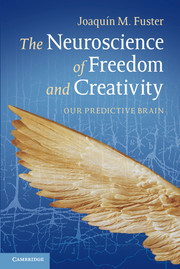4 - The perception/action cycle
Published online by Cambridge University Press: 05 June 2014
Summary
The constancy of the internal milieu is the condition for free and independent life.
Claude BernardBrains differ from computers in a number of key respects. They operate in cycles rather than in linear chains of causality, sending and receiving signals back and forth.
Dennis BrayOur capacity to choose between alternatives rests on the dynamic interaction of our brain with the world around us and within us. Whether our choices are guided by preference (freedom to) or aversion (freedom from), they are immersed in the continuous functional engagement of our nervous system with the internal and external environments. The most profound biological root of liberty is homeostasis – that is, the set of physiological mechanisms by which the organism adapts to its environment and maintains its internal stability. Some of these mechanisms create stability, whereas others protect it. Homeostasis, we might say, is the phyletic memory of physiological adaptation. And liberty, we might also say, is the elevation of the adaptive principles of homeostasis to serve the cognitive-emotional stability of the individual in society and the world at large.
Thus, liberty, like homeostasis, implies a continuous “dialogue” of the organism with “the other,” animate or inanimate. More precisely, it implies a multitude of simultaneous interactions of the self with the environment, the latter to include the internal environment of the body. Without those interactions, liberty makes no sense and has no agenda – that is, literally no choice – because liberty closely hinges on the effects of environmental events on the self and on the present or anticipated impact of the self on the environment. As the relationship self/environment develops with evolution to include human choice, something most remarkable happens: The relationship expands enormously in its time scale, especially in its future perspective, as does the span of the environment it covers. All that is a direct consequence of the extraordinary development of the human prefrontal cortex and the perception/action (PA) cycle it serves.
- Type
- Chapter
- Information
- The Neuroscience of Freedom and CreativityOur Predictive Brain, pp. 87 - 124Publisher: Cambridge University PressPrint publication year: 2013

